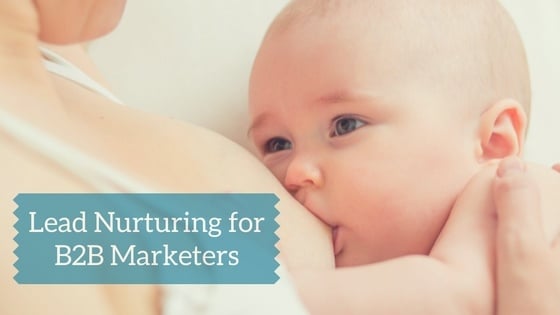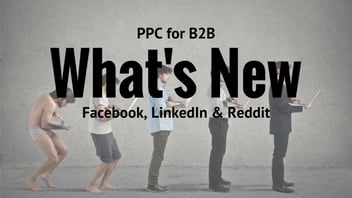
You’ll Need to Work for It! Lead Nurturing for B2B Marketers
Reading time: 4 minutes - easy!
We’ve all heard the old maxim, “People buy from people they know, like and trust.” Unfortunately for the over-eager marketer, these things take time.
Traditionally, it was the job of sales to contact someone right after they became a lead and work on them over weeks, months or even years until they are finally ready to buy. However, in today’s digital world not only does that model not scale, it’s just not effective. That’s why 79% of leads never turn into sales.
Earlier this week we talked about the importance of lead scoring for B2B and how it helps us distinguish which of our leads are more qualified than others. Well, the next step is using this data by engaging with leads and moving them through the buyer’s journey through lead nurturing.
Lead nurturing involves sending carefully timed, relevant communications with the aim of providing value and information to a lead until they are ready to buy. According to Gleanster Research, 50% of leads are qualified but not yet ready to buy. Lead nurturing ensures that when they finally do have a need, your company is top of mind.
Not only will you be more likely to make the sale, each of your leads will be handed to sales with much more value. Studies show that nurtured leads make 47% larger purchases than non-nurtured leads.
Crafting Emails Specific to Lead Nurturing
Promotional and sales emails are great for accomplishing specific campaign goals or for getting prospects to take specific actions, but they are not meant for building relationships. By providing your leads with useful emails that aren’t overly trying to sell to them, you have a much higher likelihood of them responding well because you would have crafted an email that understands your audience and provides meaningful information that is of value to them. In fact, relevant emails drive 18 times more revenue than broadcast emails, and personalized emails drive six times higher revenue than non-personalized emails.
Marketing Automation Platforms vs DIY
While it may seem time consuming to send emails out to each of your segmented marketing lists, it doesn’t need to be. It is possible to do-it-yourself through an email solution like Mailchimp and a CRM, but lead nurturing becomes much more effective when it is facilitated by a marketing automation platform. Being able to set rules for each nurturing email that you create so it automatically goes to each lead at the right time for them will greatly increase it’s effectiveness.
Dos and Don’ts of Lead Nurturing for B2B marketers
- DON’T send email blasts to everyone you are trying to nurture.
- DO send relevant content based on their stage of the buyer’s journey and the subjects they showed interest in.
- DON’T SPAM your contacts or send them emails too often.
- DO use lead scoring to determine the frequency of communications and the content they should include.
- DON’T use salesy or slick email marketing language.
- DO craft your emails like a normal person and have them come from a real email address.
- DON’T rush the process.
- DO give your lead nurturing program enough time for you to gather data, learn, experiment and see real results. 75% of leads don’t become sales because of insufficient lead nurturing.
Lead nurturing programs take time to develop and a major investment from the sales and marketing teams. But, once you have the systems in place to automatically nurture your cold leads you can scalable engage with your audience for as long as it takes to move them through the funnel.
Want to find out what a lead nurturing program would look like for your business. Book a free consultation with one of our marketing experts today!




